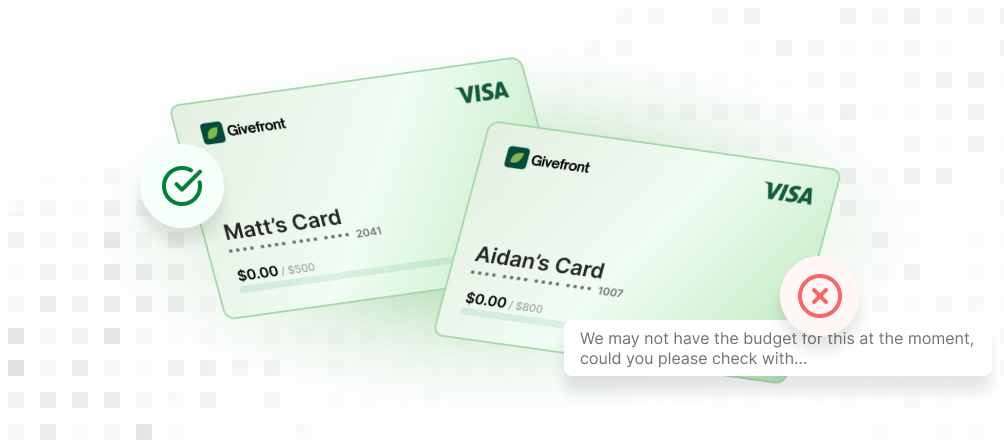A good financial report does more than explain what happened last quarter. It equips your board to govern effectively.
Unfortunately, in many nonprofit meetings, financials are either glossed over or buried in a 20-page packet that directors skim the night before. That isn’t just a missed opportunity—it’s a governance risk.
Your board doesn’t need an accounting seminar. What they do need is a clear, structured view of your nonprofit’s budget, cash flow, and overall financial health so they can fulfill their fiduciary duties and align on the organization’s future.
This article covers what belongs in the boardroom when it comes to financial reporting, what should be left out, and how to bridge the gap between raw data and meaningful strategy.
The Board’s Role in Finance
Board members are not there to audit QuickBooks. Their responsibility is oversight and strategic alignment, not daily transaction management. That role includes:
- Reviewing and approving the annual budget
- Understanding major financial risks and reserves
- Monitoring performance against financial goals
- Approving annual filings such as the IRS Form 990
- Ensuring funds are used in line with the mission and donor intent
To do this well, they need financial reports that provide context and clarity, not noise.
What Doesn’t Belong in a Board Packet
Overloading directors with raw accounting data does more harm than good. Items like a 12-tab Excel workbook, general ledger dumps, or line items labeled “TBD” create confusion. Technical jargon such as “encumbrances” or “FASB 117 compliance” without explanation only disengages board members.
These details may be useful for your finance committee, but they are unnecessary for the full board.
What Every Nonprofit Board Report Should Include
1. A Narrative Summary
Open each report with a one-to-two paragraph overview. Address the most important questions:
- Are we on track with revenue?
- Are we under, over, or on budget?
- What risks, surprises, or one-time events stand out?
- How does this compare to the same period last year?
Think of this section as a CFO briefing—even if you don’t have one.
2. Budget vs. Actuals
Present a high-level comparison of the approved budget against actual results. A simple table or bar chart works well:
- Year-to-date actuals versus budget
- Revenue and expenses by major category (Programs, Administration, Fundraising)
- Variance percentages with short explanations
Tools like LivePlan, Jitasa, or Google Looker Studio can help you generate clear visuals without specialized software.
3. Cash Position and Reserves
Directors must understand how much unrestricted cash is available and how long it can sustain operations. Report:
- Current cash on hand
- Months of operating expenses covered
- Whether reserves are growing or shrinking
If your reserves policy is unclear, now is the time to establish one. Propel Nonprofits has a strong template to start with.
4. A Few Key Ratios
Less is more. Choose one or two metrics that speak directly to board priorities. Examples include:
- Program Expense Ratio: percentage of expenses spent on mission delivery
- Current Ratio: short-term assets divided by short-term liabilities
- Operating Surplus/Deficit: whether the organization is in the black or red this year
These ratios simplify complex financial data into insights that directors can act on.
5. Forward-Looking Forecasts
Financial reports shouldn’t just document the past. A short-term forecast—such as a three-to-six month cash flow projection or a revised year-end budget—helps your board anticipate challenges. Don’t wait until December to announce that payroll may be at risk in January.
What Makes a Great Financial Report?
The best nonprofit financial reports tell a story. They don’t just list numbers; they answer the board’s unspoken questions:
- Are we solvent?
- Are we meeting our revenue and budget goals?
- Are we investing in the right programs?
- What risks should we prepare for?
- Are we honoring donor intent?
Above all, a strong report connects financial performance to mission impact.
Common Pitfalls to Avoid
- Too much detail: Save office supply receipts and transaction lists for staff accountants.
- Ignoring risk: Highlight potential shortfalls before they become crises.
- Unclear presentation: Prioritize readability over comprehensiveness.
- Assuming financial literacy: Define key terms. Not every board member comes from a finance background.
Wrapping Up: A Tool for Governance, Not Compliance
A board packet should be more than a compliance requirement. It’s a chance to build trust, strengthen governance, and empower directors to make better decisions.
When your nonprofit’s financial reporting is clear and forward-looking, board members become stronger advisors, better fundraisers, and more effective stewards of the mission. When reports are confusing or overwhelming, they tune out—and you lose critical support when it matters most.
A great financial report is more than numbers on a page. It’s a governance tool. It sparks dialogue, encourages accountability, and shows how resources are fueling your mission.
The next time you prepare financials for your board, don’t just ask, “What do they need to know?” Ask instead, “What will make them care?”
.png)



















.png)
.png)
.png)

.png)